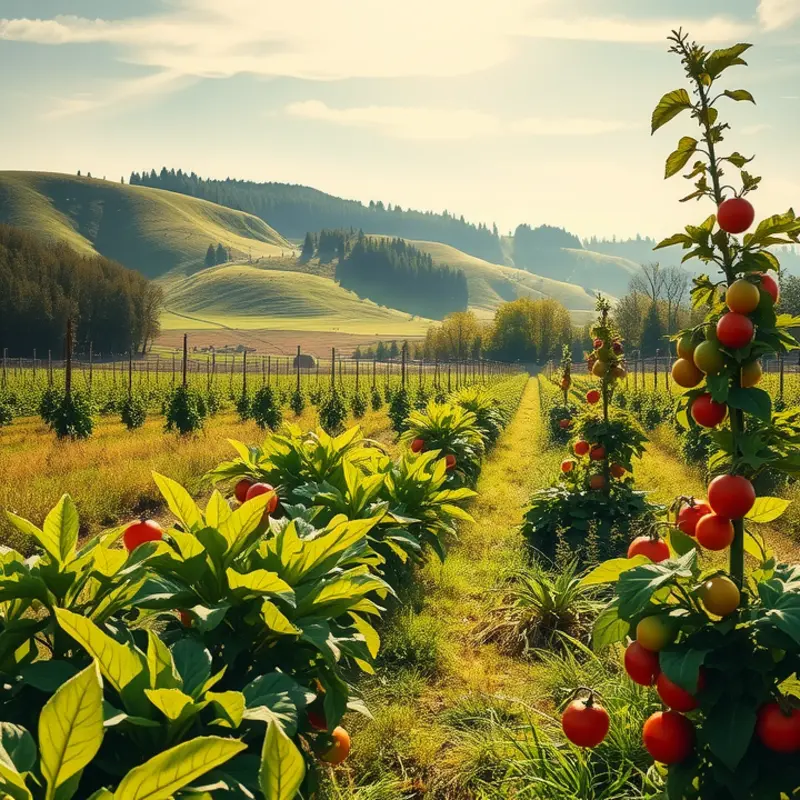Grilling vegetables is a delightful way to elevate your outdoor cooking. The smoky flavor, combined with the natural sweetness of veggies, creates a culinary experience that’s difficult to resist. Whether you’re a seasoned grill master or just starting, learning how to perfectly grill vegetables can enhance your meals and impress family and friends. In the following chapters, you’ll discover helpful techniques, seasoning ideas, and easy recipes to make vegetable grilling a highlight of your cooking repertoire.
Mastering the Basics of Grilling Vegetables

Grilling vegetables can turn ordinary veggies into a mouthwatering masterpiece. Start by choosing the right variety. Dense vegetables like eggplants, zucchini, and bell peppers are ideal due to their ability to hold up well on the grill.
Before grilling, preparation is key. Wash and pat dry your vegetables thoroughly. Slice them into uniform pieces to ensure even cooking. For example, chop bell peppers and zucchini into half-inch slices. When preparing eggplants, a slight sprinkle of salt can help draw out excess moisture and any bitterness.
Marinating vegetables enhances their flavor remarkably. Prepare a simple marinade using olive oil, garlic, lemon juice, and herbs. Allow the vegetables to soak for at least 20–30 minutes, giving them an extra layer of taste.
Grill timing varies with different vegetables. Longer-cooking veggies, like carrots or potatoes, should be parboiled first. This can be done by boiling until slightly tender before placing them on the grill. Arrange the vegetables directly over medium-high heat with a light coating of oil on the grates to prevent sticking.
Monitor grilling closely. Zucchini, eggplants, and asparagus take about 6–8 minutes, while denser veggies like bell peppers and carrots may need up to 12 minutes. Look for well-defined grill marks as an indicator they are ready to flip. Use tongs for turning to maintain shape and avoid piercing, which releases moisture.
To achieve a perfect char without burning, pay attention to temperature control. A hot side for searing and a cooler side to cook through is a great setup. Move the grill lid on and off to control flare-ups, which can quickly lead to scorching.
Test texture by inserting a skewer or fork into the thickest part. There should be mild resistance but not mushiness. Once removed from the grill, let them rest for a few minutes, allowing juices to redistribute and further enhance flavor.
The final touch is seasoning. Sprinkle some sea salt, a dash of cracked pepper, or fresh herbs to finish. Pair your freshly grilled vegetables with dips or seasonings for added flair. For a low-sodium flavor boost, explore alternatives like lemon zest or a splash of balsamic vinegar.
For more grilling tips and other culinary techniques, browse our guide on flavor boosters without salt. These offer a perfect complement to your grilling repertoire, ensuring you achieve delicious results every time.
The Art of Seasoning and Marinades

Grilling vegetables is more than just cooking; it’s an opportunity to explore flavors through creative seasoning and marinades. The right blend of spices can elevate your grilled veggies from bland to mouthwatering delights. Understanding how to pair and balance flavors is crucial to creating memorable dishes.
Dry rubs are a great starting point. Unlike marinades, they don’t require a soak period and can impart intense flavors swiftly. To create a versatile dry rub, combine some classic spices: smoked paprika, garlic powder, onion powder, and cumin. Adjust the quantities to suit your preferences, but as a general rule, start with equal parts of each. This combination provides a smoky depth, ideal for bell peppers or zucchini.
For a more aromatic rub, consider adding dried herbs such as thyme, oregano, or rosemary. These herbs not only bring a pleasant aroma but also enhance the savory notes of eggplants and mushrooms. Be sure to crush the herbs between your fingers before applying to release their essential oils.
Turning to marinades, these require a bit more preparation time but reward with depth of flavor that permeates through the vegetable. A simple yet effective marinade involves olive oil, balsamic vinegar, minced garlic, and a tablespoon of Dijon mustard. The vinegar acts as a tenderizer, the oil allows the spices to coat evenly, and the mustard adds a tangy kick. This combination is fantastic for more robust vegetables like portobello mushrooms and asparagus.
Selecting the right acid is another fascinating component of marinating. While vinegar is a popular choice, citrus juice can bring a refreshing brightness to your dish. Lemon and lime juice pair exceptionally well with summer squash and tomatoes. For an Asian twist, try tamari with a hint of ginger and grated fresh garlic. This combination complements the natural sweetness in carrots and sweet potatoes.
If you’re planning to grill root vegetables, consider a miso-based marinade. Mix white miso paste with sesame oil, rice vinegar, and a touch of maple syrup. The umami flavor of miso works wonders with the earthy tones of carrots and turnips, providing a savory contrast.
Remember that duration matters in marinating. Vegetables are more porous than meat, so they absorb flavors relatively quickly. A marinade time of 30 minutes to 2 hours is usually sufficient for most vegetables.
While preparing your grill, consider the smoke factor. Different woods like mesquite or hickory infuse grilled veggies with distinctive flavors. Cedar wood chips pair well with fruity and spicy rubs, enhancing the complexity of the taste.
For those who wish to explore seasoning beyond salt, check out this guide on flavor boosters without salt offering insights into intensifying flavors without reaching for the salt shaker.
Finally, creativity is key. Mix and match spices and herbs to discover your personal blend. The world of seasoning is vast, and the grill is your canvas, ready to bring your vegetable creations to life.
Final words
Grilling vegetables not only enhances their natural flavors but also brings out unique textures that can elevate any dish. With the techniques and ideas shared in this guide, you can confidently explore the art of veggie grilling, whether you’re preparing a simple family meal or an elaborate outdoor feast. Experiment with different vegetable combinations and seasoning blends, and don’t hesitate to make the process your own. The world of grilling offers endless opportunities for creativity, inviting you to share delicious meals with loved ones. Dive into this vibrant cooking style and enjoy every bite!







